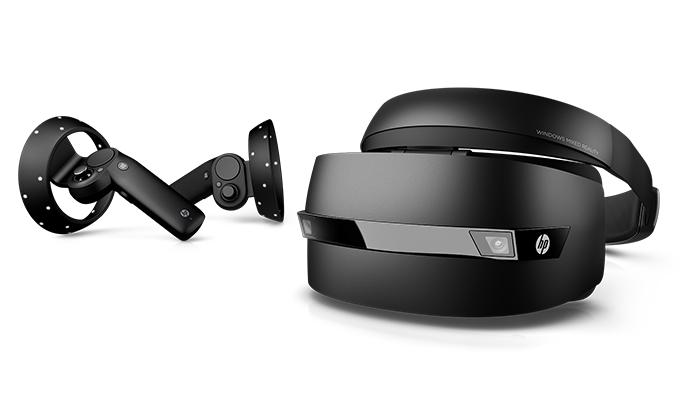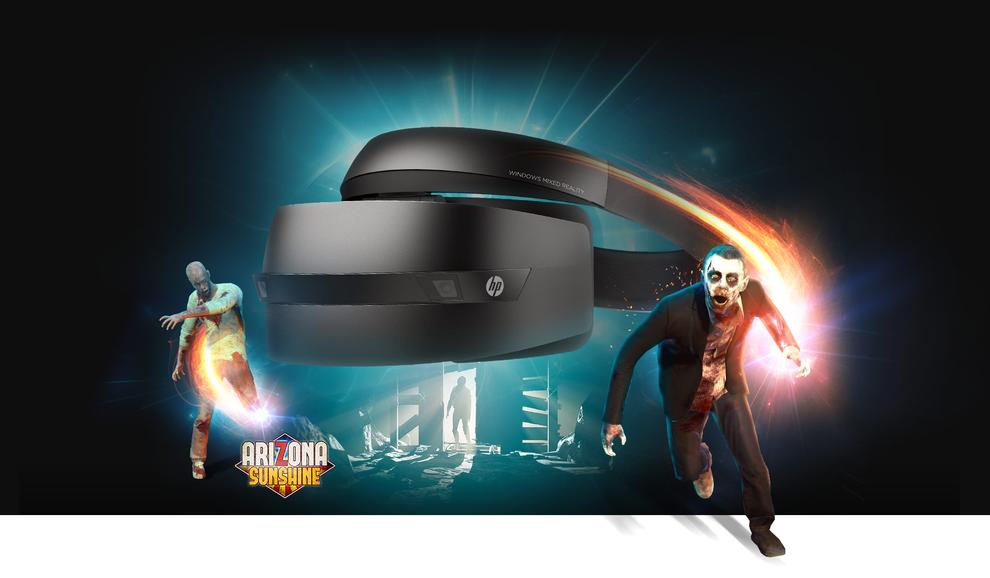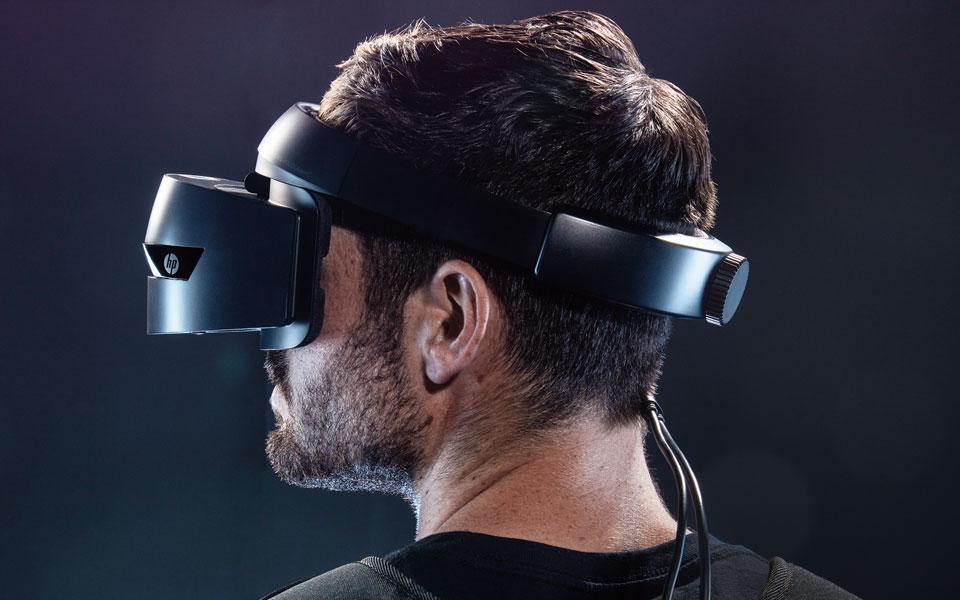
HP Mixed Reality Headset review: Software shortcomings make a robust headset feel unremarkable
Pros
- Great ergonomics
- "Home" interface feels like science fiction
Cons
- LCD displays
- Lack of content
Bottom Line
It's easy enough to get someone started with Windows Mixed Reality with HP's headset but far more difficult to give them a reason them to revisit it.
-
Price
$ 799.00 (AUD)
The Pitch
Squeezed between the regular drumbeat of the Microsoft’s acclaimed Surface hardware and their less-successful (but no less regular) attempts to keep Cortana relevant, Microsoft have finally managed to launch their virtual reality platform for the masses.
Arriving with the recent Windows 10 Creators Update and branded as “Mixed-Reality”, the biggest difference between the experience here and those on offer from Oculus and HTC is a sense of ubiquity. With Windows Mixed Reality, third party vendors can engage with the platform by produce and selling compatible hardware for it.
Seizing upon that opportunity, Samsung, Dell, ASUS, Lenovo and HP have already taken up the gauntlet here. We took a closer look at what’s on offer the last of these vendors: The HP Windows Mixed Reality Headset.
Specs
The HP Windows Mixed Reality Headset is a VR headset with two 2.89-inch Dual LCD displays with a combined resolution of 1440 x 1440 pixels per eye. If you cable it up to your PC using a HDMI 2.0 cable, it’s capable of a 90Hz refresh rate. If you opt for HDMI 1.4, it’ll be set to 60Hz.
Port-wise, there’s a single dongle plug attached to the headset. This is designed to be connected to the bundled HDMI/USB splitter, used for video input and power. There’s also a more inconspicuous 3.5mm headphone jack hidden underneath the visor itself.
The headset also comes bundled with two Bluetooth-connected motion controllers.
Design
If you had to sum up the “look” of the HP Windows Mixed Reality headset: the word you’d arrive at would probably be generic - but not necessarily in a bad way. It’s sleek, matte-black and looks like the kind of VR headset you’d see in a science fiction drama on Netflix. It arrives looking like the dictionary definition of VR headset.
Not that this conformity is necessarily a problem, mind you. Beneath those looks lies a surprisingly ergonomic beast. Having tried about a half-dozen VR headsets in recent years, I found that HPs effort did a good job of blending together some of the best elements of each. The echoes and influence of the Oculus, Vive and others can clearly be seen - and felt - here. However, unlike the Oculus and Vive, HP’s headset uses LCD rather than OLED displays.
 Credit: HP
Credit: HP Still, the extra rubberized padding on both the front and back of the headset made it very comfortable to wear, even for longer use sessions. Meanwhile, the dial at the back of the double-padded headband made it super easy to find the right fit for my head. The last thing to touch on is the snappy hinge connecting the visor to the headband, which allows you to flip up the former and jump in and out of VR without taking off the whole headset.
Setup
To its credit, the setup for HPs Mixed Reality headset was about as quick and straightforward as virtual reality can be. I plugged the headset into a PC (in this case, a HP Omen notebook supplied with our review sample of the headset), waited for it to be detected (usually within seconds), then launched up the Windows Mixed Reality Portal app and - pending any software updates - I was ready to roll.
The HP Mixed Reality Headset integrates its motion sensing tech into the headset itself, so there’s no external sensors needed.
Performance
Putting on the headset, you’re (by default) loaded into a hilltop mansion that acts as your virtual reality desktop. It’s sort of a hub between existing applications and any other VR content you own.
Moving around this environment is pretty intuitive but it’s not quite seamless: you can either move around in stiled steps using the thumbstick on the motion controllers or you point and click to "teleport” yourself around the mansion. This process definitely a little clunky - but it’s not quite as bad as it sounds and well-in-line with the best of where VR UIs are at these days.
If you don't feel like using the motion controllers, you can always resort to using the mouse and keyboard. However, doing so will pretty quickly remind you why those motion controllers are there.
Regardless, once you’ve learned the ropes, you can go to your virtual living room and watch a movie (purchased via the Microsoft store) on a screen you can resize with your hands. There’s definitely a cool, futuristic charm here to the way that the elements of your traditional PC experience have been reconfigured into faux-physical objects. It’s easy to imagine this “Home” experience becoming more customizable over time.
 Credit: HP
Credit: HP If anything, that latent potential the most exciting thing about the Windows Mixed Reality experience. Sure, at present, you can’t do a whole lot with my house apart from import creations from Paint 3D and jump into VR experiences. Potentially, in the future, it’s very easy to imagine being able to put up different artworks, change or move the furniture around and even modify the way that files or media are represented. What if you could have a virtual home where your library of video files or photo albums are represented by frames hanging from the walls or a music library distilled into virtual records that you can pick up and listen to? Again, the word generic again comes to mind. Only this time, in a far more exciting context. Even if reality hasn’t quite caught up, the Windows Mixed Reality experience feels like an early blueprint for a science fiction future I can't wait to see unfurl itself.
Unfortunately, we’re not quite there yet. The baseline Windows Mixed Reality experience itself is more flesh-out than Oculus or HTC’s corresponding “waiting rooms”, but there isn’t a huge software library available for these Mixed Reality headsets.
 Credit: HP
Credit: HP At the moment, there are few big-name exclusives to be found but nothing close to a killer app. There’s the usual set of VR and 360-degree viewing apps, video streaming services like Netflix, Minecraft and a whole bunch of ports from the Vive like Arizona Sunshine and SUPER HOT. However, with the total library of Mixed Reality games on the Windows Store yet to reach triple digits at the time of writing, it’s hard to rate it too highly on this front.
Even if the goal of Microsoft’s platform here is ubiquity, it still feels in desperate need of something to draw attention away from the competition. It's easy enough to get someone started with Windows Mixed Reality but far more difficult to give them a reason them to stick with it and come back again and again.
The Bottom Line
While HP have crafted a perfectly serviceable VR headset here, it feels its let down by the broader circumstances of Microsoft’s Mixed Reality platform. Even if it’s bristling with promise, the potential of the platform remains out of reach. At least, for now.
As a result, if you’re looking to jump into VR gaming, the library of content available on the Vive and Oculus does a much better job of justifying the expensive price-tag than this. HP have brought some robust hardware to the table here but the software powering that experience means it just doesn’t feel ready for prime-time.
 Credit: HP
Credit: HP Brand Post

Most Popular Reviews
- 1 Dell U3223QE review: A winning debut for an IPS Black monitor
- 2 HP Spectre x360 16 review: The right 2-in-1 at the wrong time
- 3 Acer K242HYL review: An affordable monitor for any occasion
- 4 GeForce Now review: You bring the games, Nvidia streams the hardware
- 5 Asus ProArt PA279CV monitor review: The go-to for content creators on a budget
Latest News Articles
- Metaverse mega yacht sells for AU$908 thousand dollars
- RIP Oculus
- HTC Vive Pro 2 Full Kit is now available for pre-order in Australia and New Zealand
- HTC move VR collaboration app into open beta
- HTC add Half Life: Alyx to Vive Cosmos Elite bundle
Resources
Macworld
What's new, plus best mac-related tips
and tricks

Business Centre
The latest business news, reviews, features and whitepapers

Videos
Watch our video news and reviews from around the world

Guides
Comprehensive buying guides, features, and step-by-step articles

PCW Evaluation Team
Pedro Peixoto
Aruba Instant On AP11D

Set up is effortless.
Cate Bacon
Aruba Instant On AP11D

The strength of the Aruba Instant On AP11D is that the design and feature set support the modern, flexible, and mobile way of working.
Dr Prabigya Shiwakoti
Aruba Instant On AP11D

Aruba backs the AP11D up with a two-year warranty and 24/7 phone support.
Tom Pope
Dynabook Portégé X30L-G

Ultimately this laptop has achieved everything I would hope for in a laptop for work, while fitting that into a form factor and weight that is remarkable.
Tom Sellers
MSI P65

This smart laptop was enjoyable to use and great to work on – creating content was super simple.
Lolita Wang
MSI GT76

It really doesn’t get more “gaming laptop” than this.
Featured Content
- Which Lenovo Laptop Should I Buy?
- Every TV in Samsung's 2022 line-up: OLED, Neo QLED and more!
- Top 10 best Android and Apple phones for under $600
- Everything you need to know about Smart TVs
- What's the difference between an Intel Core i3, i5 and i7?
- Laser vs. inkjet printers: which is better?










